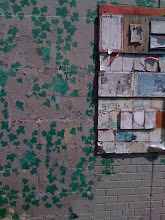
Magazines like Vogue and Gentleman’s Quarterly are required reading for those who are who are literate in style. But while GQ celebrates the average dude, Vogue chastises everyone but the ladies who lunch. GQ features articles about fashion, finance, sports, politics, and culture—everything a man needs to be smart and stylish. Vogue, on the other hand, reduces its readers to beauty dilemmas and carnal conundrums.
GQ celebrates masculinity in its myriad manifestations, but Vogue prescribes a femininity that is blond, buxom, and boy-crazy.
Jimmy Kimmel is one good poster-boy for this contrast. Kimmel is no Adonis. He is more chubby than chiseled, more stout than statuesque. Yet in November 2008, GQ deemed him worthy of gracing its cover.
This wasn’t the first time that the cover model has been more boy-next-door than Bond. Funnyman Seth Rogan, whose film career is based on his ability to be endearingly bumbling and unkempt, was featured on the cover of the August 2008 issue. Though GQ does include advertisements for high-end luxury brands like Prada and Burberry—advertorials featuring big-eyed, bony boys with puckered pouts and très-chic trench coats—lately, some of the men who have graced the cover are more couch-potato than couture.
What does this paunchy pair have in common? Searing intellect, wicked wit, and thriving careers. In their feature stories, these gentlemen are revealed to be smart, funny, and charismatic. They like to make pizza from scratch. Their homes are decorated with pictures of their families. They are passionate about politics and can discuss their views eloquently and with a sense of humor. In short, they’re cool guys with whom you’d like to share a homemade pizza.
Kimmel and Rogan kind of seem like average guys who got lucky. They are talented and successful, but their talent and success seem attainable. Rogan and his friends wrote some pseudo-autobiographical screenplays, and people loved them because they were so comically astute. Kimmel fart-joked his way to fame with fellow Average Dude Adam Corolla on The Man Show. These wisecracking Joes are accessible, lovable characters who resemble men you might meet at the bookstore or sports bar. They’re regular guys—just with enormous paychecks.
In short, both men are on the outskirts of celebrity, well known and recognizable, but outside the glare of the tabloid headlights. They are known for their careers, rather than their clothes or their crushes.
It’s a different story for Vogue cover girls like Reese Witherspoon. A romantic comedy darling and Vogue cover-model veteran, Witherspoon graces the cover of the November 2008 issue. The actress is best known for her work in Legally Blonde, the story of a ditzy ingenue who uses her feminine wiles to charm her way into Harvard Law. She ultimately uses her womanly intuition and fashion know-how to crack the case and save the day. Elle Woods’ sbeauty trumps her brains, and Vogue seems to prescribe the same thing for its cover models.
Witherspoon’s cover reads: “Reese Revealed—New Look, New Man, New Lease on Life.” Inside, long-winded descriptions of Witherspoon’s impeccable physical appearance and blossoming romance with superhunk Jake Gyllenhaal take precedence over any substantive discussion of her likes, dislikes, and views. The characters Witherspoon plays, and the persona that the magazine presents, are unattainable—too pretty and too peppy to be plausible.
The cover choices embody some of the fundamental differences between these two publications. GQ’s motto is “Look Sharp, Live Smart,” and the magazine is dedicated to achieving both ends. The magazine speaks to sartorialists of all tastes, as well as epicureans, bibliophiles, and brainy bloggers. The November issue featured fashion editorial spreads of durable designer outdoor gear, classic trench coats, and modern three-piece suits in addition to a recipe for beer-braised beef and a list of five books each presidential candidate should read to round out his intellect, work on his weaknesses, and broaden his understanding of the American experience.
While GQ is a smart guide to stylish dressing and living, Vogue sometimes reads like a blog written by celebutantes and socialites. Assistant Editor Lauren Davis’s lavish 2007 wedding to Bolivian billionaire Andres Santo Domingo became fodder for a feature story. Famously flaxen fashionista Tinsley Mortimer seems to appear in almost every issue. Her most newsworthy accomplishment to date? A cameo role in a recent episode of Gossip Girl. At times, the magazine feels like a gussied-up version of MySpace—only, instead of the sly, self-shot portraits, the images are exorbitantly expensive, liberally airbrushed pictures of feminine “perfection.” There’s a crowd of It Girls who are consistently featured, and like Witherspoon, Davis, and Mortimer, they all look the part: blonde hair, blue eyes, lithe figures, and expensive ensembles. The women are portrayed as one-dimensional and essentially the same. It feels like reading the same interview over and over again.
I am going to continue to hoard my boyfriend’s issues of GQ until I can find a women’s lifestyle publication that informs my consciousness, as well as my closet. It’s great to look sharp, but a woman needs to live smart, as well.








